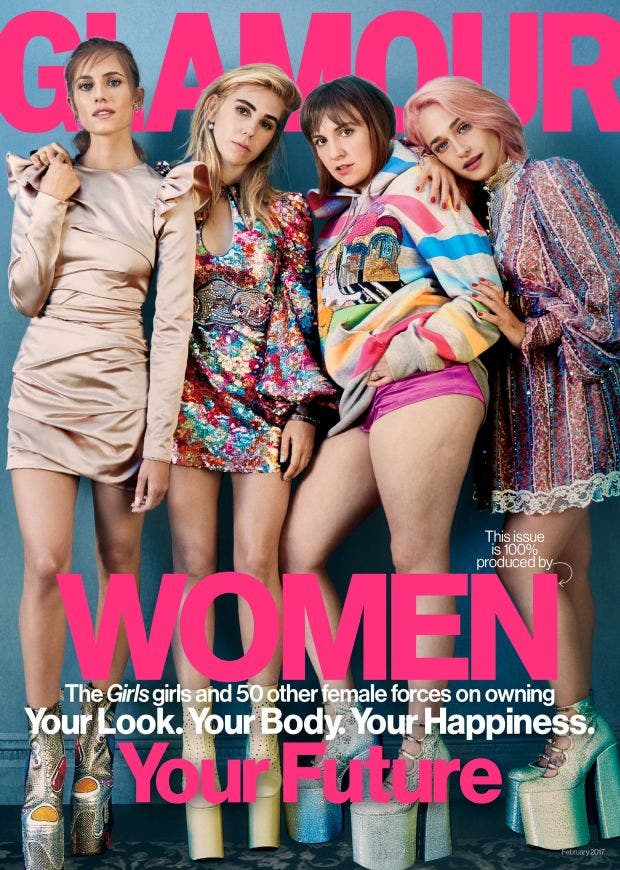'Glamour' Leaves Lena Dunham's Cellulite On Cover — And We Love It!
Her cellulite is something to be celebrated. Here's why.
 WeHeartIt
WeHeartIt Lena Dunham has always been vocal about topics such as body positivity. On the February 2017 edition of Glamour magazine, the actress is seen posing alongside co-stars of her hit HBO show Girls.
The four women— Jemima Kirke, Zosia Mamet, Allison Williams, and Lena Dunham — look nothing short of fabulous in their vibrant outfits and platform shoes.
On the cover, Lena Dunham is clad in a colorful hoodie and pink shorts — and her cellulite is left unedited.
The actress took to Instagram to express gratitude to Glamour for not Photoshopping her cellulite. In the caption of her photo, she mentioned being bullied as a teenager for the way she looked.
“Let’s get something straight,” she wrote, “I didn’t hate what I looked like — I hated the culture that was telling me to hate it.”
She stated that as her career kicked off, people saw her body positivity as an inspiration but only by noting how brave it was to “show THAT body on TV.” She added that she has also been insulted mercilessly since starting her public career.
“Well, today this body is on the cover of a magazine,” she continues, “that millions of women will read, without Photoshop, my thigh on full imperfect display. Whether you agree with my politics, like my show or connect to what I do, it doesn't matter — my body isn't fair game. No one's is, no matter their size, color, gender identity, and there's a place for us all in popular culture to be recognized as beautiful.”
She thanked Glamour magazine for keeping her cellulite on their cover, and she thanked women in Hollywood and Instagram for representing female bodies of every form.
Glamour magazine’s decision to not retouch Lena Dunham’s cellulite marks a small step forward for body positivity in the media.
Media representations of body types should be inclusive to all forms simply as a reflection of the real bodies we all see in real life. By including only certain body types and excluding others, media outlets distribute an unreal and limited representation of people’s bodies. Every type of body is deserving of a body positive attitude, and this begins with the normalization of all types.
Lena Dunham’s presentation of her body in the media (such as in magazines or on her television show) should not be celebrated as a bold move of displaying "THAT" body, but a bold move of normalizing a real body type that does not often get to be seen in many television shows or magazine covers.
Although Lena Dunham might be seen by some as a controversial feminist figure, her message about body positivity is something we can all agree hits the mark.


